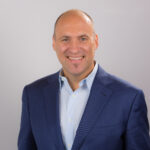
Businesses can’t survive if their cash flow is not consistent. You want to make sure you always have a good amount of money coming in. Nathan Shields sits down with top financial adviser Eric Miller from Econologics as they discuss what you need to do to ensure and increase in cash flow. They discuss seven tips that will help create a better cashflow for your business. A must-listen, especially when you need to learn how to increase profitability.
—
Listen to the podcast here:
The Simple Things That Increase Cash Flow With Eric Miller Of Econologics
A long-time frequent flyer, Eric Miller of Econologics is our guest. Eric, how are you doing? Thanks for joining me.
It’s always a pleasure. What are we talking about?
We’ll be talking about cashflow.
That’s good.
We’ll talk about cash. We want to talk about how we can increase cashflow in our PT clinics. I’m going to give you a minute to talk about where you’re coming from so people know. If they haven’t heard from you before and why you can talk into this subject. As PT owners, we think we’re limited to the cashflows that we simply see with the patients that are coming through and don’t know how to necessarily increase that per se. We want to talk about what we can do to fill up our buckets a little bit more. Increase that profit margin and some of the cushions that we have in our clinics. Before we get into it, let’s share with the group quickly about you and where you’re coming from.

I’m a financial advisor by trade, so I learned how to be a financial advisor over the years. Years ago, I had the first realization that if I was going to help practice owners become better in their personal finances, then I had to understand a little bit about how their practice work. Let’s face it. That is the main generator of wealth for most practice owners for their household. Most of them were very dependent upon the cashflow of their business for their household’s financial survival. If I was going to teach people, I had to learn how to be better with money. I wanted them to have more income sources, less debts, pay less taxes and all the things that they want. I had to know where it was coming from and show them how to improve the income-producing ability from that source. That’s where our whole niche of working with private practice owners, specifically physical therapists, came from.
Your whole business model is around helping private practice owners. That’s in physical therapy to become more financially viable and successful.
We make your business more valuable and make sure that that translates into personal financial success. As many practice owners, you can have a great big practice that’s producing a lot of money, but if it’s not translating to the benefit of the household, what’s the point?
Talking about increasing cashflow, where do you want to start?
One: Know The Golden Rules Of Revenue And Expenses
We can talk about the number one thing in increasing cashflow. It all starts with having the correct numbers. Many times, you hear people say, “My cashflow is low,” or “It’s not where it needs to be.” I’m like, ”Where does it need to be?“ I’ve said this before, “You got to make sure you understand the two golden rules of income and expenses.” Those golden rules are your business. Just face it. It’s good to try to spend everything that it makes and then some. Don’t fight that it will, but it’ll also make what it needs to make to be able to function and survive. There’s a natural demand for money. If you want money, you practice and needed money, you needed to pay a bill or your kid needed surgery, that was going to cost X amount of dollars. You would do whatever you needed to get that money together and pay it. Why? Because there’s a demand for that money.
Make your business more valuable, and then make sure that translates into personal financial success. Click To TweetIt’s the same thing in a business. You have to have this almost obsession with, “I need this much money for us to be able to be solvent, expanding and profitable so I can have business reserves, pay off my debt and pay myself as an owner.” It comes down to making sure you know exactly what that number is. Whenever I talk with private practice owners, the first question I asked is, “What is your make and break number? Are you including all of your profits in that number?” Nine out of ten of them said, “No, I wasn’t.” You’re operating on the wrong number. Once you get that number, at least you know what your target is. That’s where you start. That’s the first thing. You have the right target.
I can think back to my experience that things started changing in my business when I did a few things. One of those fundamental things was sitting down with my CPA monthly. I told him, “You need to teach me how to read a profit and loss statement and show me.” This is many years into ownership. “Show me my cashflow and all that stuff. Help me figure out what my break-even number is, then I could translate that into visits per month.” I just knew that baseline standard for every clinic after that going forward because I did that on a routine basis. I knew my numbers, but the one thing that I know you guys push hard for, that I didn’t do. I wish I had. I would have much more money in the bank if I set aside that 10% of gross revenues to owners as an expense line. It’s one thing that I know what you didn’t cover right there, but part of knowing your numbers is putting that expense line in there.
I think you have to include that. Remember, you have three roles in your business. You have your practitioner role, your executive role, and then your owner role. Most private practice physical therapist pays themselves a salary through W-2 wage. You may take some distributions out of the business at certain times. Maybe you call that your executive compensation, but most people don’t compensate themselves as owners. You need to because it’s vital that you do that. Number one, it increases the demand for more money in the practice. It also handles the financial issues at your household because if you’re doing $1 million, $2 million or $3 million in revenue, 10% is an awful lot of money. It builds up and then uses that to create other income sources. Remember that the factor in your payments to each other when you’re coming up with that make or break number.
Two: Inspect Your Finance Lines
Know your numbers, that would be your number one. Number two, if you’re having difficulties with cashflow or you feel like it could be better and it’s just not, you have to inspect your finance lines. I worked with other types of practice owners, but in a PT organization that relies heavily on collections and reimbursements, who’s doing that? It’s not automatic. There are people who are doing that. They are responsible for your finances. Whether you like it or not, their emotional viewpoint or attitude towards money does have something to do with it. I’m sure you’ve met those people who if you gave them money, would be out the door the next day.
When you’re looking at the people who are responsible for your collections and billing, you got to have someone that has a bulldog mentality. I’ve seen so many PTs who have so many difficulties wasting money and money that was never built that should have. You’ve heard the stories. I had one guy who said, “I found $20,000 of unreimbursed treatment sitting in a desk drawer,” and stuff like that. If you’re having difficulties with cashflow, you’ve got to go inspect that line. What’s going on here? Are there good systems in place? Do we need to create more? That’s where your eyes should be especially on your finance lines.
I think so much money in talking to Will Humphreys, my business partner and now the owner of In The Black, a billing company for physical therapists. He onsistently loses money at the front desk because those people at the front desk are scared to ask for the copay. As you said, the bulldog mentality has to be there. My best front desk people and my best billers were the people who said, “We’re not emotional about it at all.” It was simply, “This is the transaction that needs to take place. This is the agreement that you made with your insurance company, not with us, regarding your copay. Your insurance plan says blank is owed when you come to physical therapy. I need to collect that $20 copay. I need to collect $100 to go towards your deductible. How would you like to pay?” The best one is, “Why don’t we just get your credit card on file so we don’t have to go through this each time? You don’t have to remember it. We’ll have it on file. I’ll give you the receipt as you’re walking out the door.”
That was the other thing I was going to say. You got to make it’s super simple for people to pay you.
That can be tough for owners as well because we might own the company, but that doesn’t necessarily mean we know how to manage the front desk personnel. We could run it ourselves but we don’t know how to manage somebody per se. The same thing can be said for billing people. Even if we have billing in-house or outsource it, we don’t know how to hold them accountable. That’s where you can look at previous episodes. You can talk to my business partner. We talked about how to hold your billing people accountable. You need to know your numbers on the billing side as well, and not rely on them saying, “Here are the reports. We’re doing a great job. Hopefully, your cash and your bank account are still going in the right direction.” As physical therapists, we know how to manage that. We have the ability to do so. We just have to talk to the right people. As I said, I’ve done an episode on it.
I have the right numbers of what those collection ratios should be. All those things that are going to result in money need to be addressed. Have a stat on them so you can inspect that. We’ve all had these people in our companies at some point in time who are doing pretty well for a period of time, and then they have massive problems. They’re like a yo-yo. They go up and they go down. Find another place in the organization for that person other than the finance lines.
Don’t let them touch your money.
Do not get them anywhere near the money lines because the result is awful when that happens.
It’s when I turned a blind eye and trusted people to get the job done where a lot of money got pilfered away. I assumed things were happening and I wasn’t inspecting it. I didn’t have my pulse on it. I just assumed things were happening and they weren’t. Money’s got taken away from my clinic.
It will spread everywhere if it’s not channeled correctly. That is for sure.
I remember in my consulting that you can take your hands off of almost every position in your company, but CFO is the one that you rarely step away from.
I want to make sure that you’re getting very heavy and accurate reports in that area constantly. There are some other areas that may not have as much attention on, especially if the results are good. Going forward here, that is an area that’s a little bit more difficult in a physical therapy office because it’s not like there’s a lot of cash. That’s just the transaction-wise that are changing hands. Employee theft is a big deal for small companies. It’s becoming more and more rampant that we are seeing embezzlements occurring. Criminals can get very creative when it comes to this. That’s why you have to make sure you have your attention in this area.
Much of it can be that simple transaction at the front desk. That $20, $25, $10 or $50 here and there adds up over time.
It’s a simple thing. I have four more. Do you want to keep going?
Of course.
Here’s a good one that everyone can do. All of these things we’re going over. I know it seems sometimes that there are outside forces but when you start looking at it, it’s always an inside job. There are always things you can do inside of your practice.
We might not necessarily be breaking new ground here, just put more attention on these things.

Increasing the speed at which everyone does their jobs. Time gets a lot in the way of production. What I’ve seen, especially in practices that have a lot of patients coming in the door, you need to work on speed of service. Wherever you look in your organization and say, “Where can I increase the speed of this service getting done what I wanted to do?” Even when you’re doing the therapy, it doesn’t take away from the care. Some of the best practitioners I’ve seen work really fast. Not just so much in the healthcare areas but also in any other areas of your organization where things need to get done very quickly. When you start doing that, you take time out of the equation and you will see income go up. It’s one of those things. You’re like, “What would a speed have to do with it?” Think about it. When you complete something, it’s done and now it opens you to do more things. If you can get people to increase the speed at which they get their products, you’ll see your income go up quite a bit.
A lot of that depends on the clarity that they have regarding their position. If they know that their main product is to get patients in the door, then they’ll probably be going to focus on getting patients in the door. If you add the elements of time to it, we not only get patients in the door but we get the patients in the door within 24 hours of receiving the first phone call, fax or how we receive it first. We’re not going to sit on it for a week and then call them, and see if they call us. Our job is not only to get them in but get them in now. If they’re going to reschedule, we’re going to push for a reschedule later this afternoon versus two days away.
Three: Get Things Done Faster
Any area in your business, whether it’s scheduling, collecting money or whatever it would be, how can I increase the speed of this? How can I get that done faster? That’s where you’ll see the production increased because of that.
In the billing sense, Will has recommended that when you’re looking at your AR, aging report, you want that aging report front-loaded with cash. The money that you’re expecting to see should be within that first 0 to 60-day accounts receivable aging timeframe. Maybe only 5% in the $60 to $90, 5% in the $90 to $20, 10% in the $90 and above because you have worker’s comp or liens out there that take longer naturally. Your insurance stuff should all be front-loaded up into that 0 to 60-day timeframe if you’re doing things well in the collection spaces.
It’s a missing element that a lot of people don’t think about. If they looked at their organization and they found out ways where, “This has taken too long. It doesn’t need to take this long. We can increase the delivery of this,” they would find that it would have a dramatic impact on their cashflow.
Not to belabor the point but I know there are studies out there that if you don’t collect that copay at the time of service and they walk out the door, the percentage that you receive on that dollar immediately goes down to $0.65 on the dollar. If it goes out 30 to 60 days, it gets down to 50%. Twenty-five cents of every dollar that’s out there is going to get collected if it’s not collected as soon as possible.
When time enters the equation, it stops. It slows things down. You want to make sure you try to do everything as instantaneous as possible. I’m lazy by nature. There are certain things I’m lazy about and there are certain things I know I have to do it now. If I don’t do it now, it will cost me down the line. Number four, this one is off the wall but I will tell you this. I’ve seen this happen. Have you ever walked into a place like a facility that’s full of clutter, it’s not very kept and it looks like crap?
Make it super simple for people to pay you. Click To TweetThere are magazines all over the place and lots of stuff on the walls.
Do you think their cashflow is good or bad in an office like that?
You’d question it. You’re considering that lack of organization.
Four: Make Sure Everything Is Organized
It’s bad. Make sure everything is very neat and orderly. Get rid of clutter, things that you don’t need and things that you don’t use. Make sure that the appearance of the people is nice. A lot of people wear, not necessarily a uniform, but they have the name of the company. It makes a difference when people see that. The cleanliness of the place matters right now to people as far as how safe people feel when they’re in that particular practice. Make sure that the facility is clean and not cluttered. Nobody likes clutter.
You can see that not just in the front desk area. That’s where we initially go when we think about clutter in the healthcare setting. In a PT setting, it’s also in your gym. Make sure you have plenty of space between tables, especially during this time. Anytime that you can declutter the area and make it look less busy, it lends toward our mutual friend, Sean Kirk’s theory, “If you want to increase the number of patients in your clinic, add more tables.” If you add more treatment tables, then it seems like there’s a space for that person to be. The last thing you want for the patient is to come out of a treatment room or come from the front area at the front desk to start their visit, and there’s no place for them to lay down on the table and get the treatment that they need. When you go to church, the last thing you want is to not have a seat.
You want to go in there and you want to feel comfortable. You want to feel like, “This place is clean and I can sit down and I’m not going to feel dirty.” It does make a difference. When you ever went to a restaurant or someplace and it was nice. It was a good environment. Everything was presented and then you want to go back and you pass. It’s the same thing with your practice. Make it spic and span and aesthetic. If you do that and get rid of a lot of the stuff, then open up new space so you can deliver more services, it’s going to improve your cashflow.
One thing to consider also, and I didn’t think about this until after I opened up my first clinic, I used an interior designer to design some of the front waiting room and treatment rooms. I got a lot of compliments on that. I didn’t think much of it until I had another experienced physical therapy owner come by my practice. He’s like, “Smart move on the design stuff,” because who makes the decisions in healthcare? It’s the moms. The moms are making the decisions for their parents, for their kids, for their spouses so if you can make it nice and presentable for the females, then more than likely, you’re going to gain their trust.
Did you take credit for that when he said that? You’re like, “I meant to do that the whole time.”
I was thinking so far ahead. That’s me as a new owner thinking it awfully.
Five: Hire The Right People
Number five, make sure you don’t have people that should be out there doing your marketing trying to get you more referrals. Don’t stick them in the organization with stuff that is going to clutter what they’re supposed to be doing. You want to make sure that the people who are supposed to do your promotion or marketing are allowed to do that. A lot of times, it’s hard to expand an organization if you’re doing all the functions especially when you first start. You want to make sure that you have marketing people or whatever.
Those people are internal. They’re there to deliver. People who are going out there, doing the promotion and marketing, talking to the doctors, trying to get referrals, trying to manage the social media and all that, don’t bog them down with other stuff that’s going to not allow them to do their job, which is going out there and trying to find new patients. That would be one of them and that also goes for the CEO. Don’t bog the CEO down with things that are going to not allow them to strategize and make sure that things are getting done in the organization. They’re getting drawn back down in the organization instead of being able to look at, “How do I expand? I want to buy this new practice.” You keep that person outward. Let them be them.
A couple of things come to mind. In my mastermind group, one of my clients talked about this because he’s growing, expanding and hitting some great numbers. What he recognized on the marketing side is he was doing all the marketing, going out and visiting the doctors. He would make the marketing pushes, especially when the holidays come around and stuff like that. That means he’s only getting out once a week or twice a week for a few hours at a time. By hiring someone part-time to solely focus on marketing, that marketing strategy went crazy and their numbers increased because now there’s someone who is consistently hitting the doctors. It’s not dependent upon the owner who’s got plenty of other things to think about and do to get out and market when he has time.
That happened to me as well as I hated marketing, to begin with. I was happy when I found a physical therapy assistant that wanted to do the marketing and blocking out time in her schedule to go out and market on a routine basis. Number one, I was happy because I didn’t have to do that crap. Number two, someone was excited and doing it routinely instead of me and not just when I had time. As owners, numbers go up a lot of times so we don’t have marketing time to get out and visit. Inherently, the numbers go down. Now it’s time to market again. We go out marketing and we ride that roller coaster, whereas if there was some consistency to our marketing efforts with someone who is dedicated to marketing, then you wouldn’t have to worry about that so much. You’ll have a consistent increase.
To that person’s point, that CEO that hired that person part-time, I wonder how much that increased their cashflow by having that person do that. It’s a huge number.
The hit to their expense line was simply the part-time salary of someone who’s going out and doing marketing, whereas all their other expenses are saying the same that essentially goes right down to the bottom line until they have to hire the next person.
Six: Focus On The Right Things
I got one more. When is the last time you’ve looked at all of your income sources inside of your business and made sure that you are focusing your marketing efforts or whatever your efforts are on those that are providing not only the highest profit margin but have the highest demand and the easiest to deliver? If you’re going to form a business and you have a product or a service, you want it to be profitable. You want a lot of people to want it and it should be fairly easy to deliver that service optimally. In a PT practice, what are some of the income sources that you have? You have reimbursed patient care and non-reimbursed patient care. You have supplements performance marketing and cash pay line.
Even within reimbursements, there could be commercial payers versus workers’ comp versus motor vehicle accident/leaning patients. There could be different avenues that way.

I would break all those down. We have an exercise that I can make available that people can download. It would allow them to look at their income sources and all the different services that they’re providing. Making sure that they’re pushing or marketing those services that provide a reasonably good profit margin. That they are in good demand and fairly easy to deliver because that’s what you would want to push. If you’re not pushing those, what can help increase your cashflow is finding some of those things that would be able to do those. You always want to look at your services. Where can you expand? What can you add? What are some things that you can introduce that you’ve always wanted to that could increase your bottom line? Adding HODs or services like that, you can increase your profit margin by doing those things. That is what I would do. Inspect, review my income sources and market those that are going to give me those three things.
I know it’s helpful for some of the clinicians here in Alaska to have massage therapists on staff because there are insurance companies that will reimburse patients for a massage therapy as long as it’s directed by a healthcare professional. They’ll have massage therapy onsite. That adds to the benefit and it’s another cashflow. That’s pretty easy to implement. You don’t have to have any additional equipment necessarily. You just have to give them space to do it.
It’s not that hard. You just have to look at it and say, “What would it take to get this thing going right now,” and just execute and do it. That’s a pretty good list right there. If people did those things, it certainly wouldn’t hurt them. It’s the little things. It’s that 1%. You can look across an organization. If you could prove to every area of your organization, that 1% or 2% will have a big impact on the organization somewhere. I think that’s going through these things of what you can do. It may not seem much. I don’t think any one of these is going to change your life right away, but a combination of doing all these things would improve your cashflow tremendously over time.
Seven: Motivate And Coordinate Your People
I remember you did a presentation once about what to do when someone is in a cashflow crunch. They’re having issues and they’re bleeding money. One of the things that I recall and always stuck with me is to focus on your purpose again. Make sure the employees are focused on that purpose again. As you start pushing some of these, some resistance might come up like, “You’re all about the numbers,” or “You’re all about the money.” Number one, if it hasn’t been clarified and solidified amongst the team, then it’s going to look like that but when you can say, “No, our purpose is to serve people. Here’s our purpose blank.” It’s to do some kind of service to help empower, get people out of pain, you name it. If we can do it faster and we can see more people, that means we’re doing a better job and having a greater impact on our community. Tying some of that stuff back to the purpose helps people look past the superficial complaint that you’re just about the numbers or money.
You are a genius because that’s the number one thing to help improve your cashflow. Everything you just said was correct. All these other mechanical things you can do in an organization, you can look at the numbers, you can expect your finance lines, you can increase the speed of service, clean the place up and all these other things. If you get everybody motivated and coordinated behind you and the purpose of the organization as a unit or a team, that’ll show more fruits of labor than anything else. That will show more rewards and results than anything else if you could do that. That was beautiful. I’m glad you remembered that.
You brought it up in times of cashflow crunches. We were talking about people who might go in. If you want to get a huge return on your investment, spend the time and energy to focus on clarifying your purpose. Make sure it’s somewhat inspirational and get people out of bed to work for you. That generates culture, and now this culture wants to see itself improve, grow and greater expand our purpose to affect more people. That’s when you start seeing some serious cashflow changes for the positive and an increase to the net value of the company. It’s when people are looking for opportunities to organize, increase the speed, and know their numbers as it pertains to how they fit in the company. It all works together and starts creating a better organization. Thanks for joining me. If people want to get in touch with Eric Miller of Econologics, how do they do that?
If you could improve every area of your organization by one or 2%, that will have a big impact on the organization. Click To TweetThey simply go to www.Econologics.com. When you get to the homepage, it’ll say who we serve. You can go to Physical Therapists because you’ll be right there. We have Financial Success Guides and plenty of downloads that you can utilize to help you on your journey, assessments and all kinds of things.
If they want to inspect their income streams as you mentioned in number six, is that where they’d find that as well? Is that readily available on the website?
I do believe that there is an exercise on there. If it’s not, we can put it on there or they can email me directly. It’s Eric@Econologics.com.
Thanks for sharing. It’s awesome. It’s all about the money and all about the Benjamins. Thanks for your time.
Important Links:
- Econologics
- Previous Episode – Will Humphreys
- Eric@Econologics.com
About Eric Miller
 Eric Miller has been in the financial planning industry for over 20 years. He’s a co-owner of Econologics Financial Advisors – awarded an Inc. 5000 honoree for 2019. As the Chief Financial Advisor for the firm, Eric has had the good fortune to have over 10,000 financial conversations with private practice owners in various healthcare industry and helped guide them into a more optimum financial condition using a proven system.
Eric Miller has been in the financial planning industry for over 20 years. He’s a co-owner of Econologics Financial Advisors – awarded an Inc. 5000 honoree for 2019. As the Chief Financial Advisor for the firm, Eric has had the good fortune to have over 10,000 financial conversations with private practice owners in various healthcare industry and helped guide them into a more optimum financial condition using a proven system.
Love the show? Subscribe, rate, review, and share!
